Introduction
What is monitoring?
Monitoring is the act of observing and checking the progress, quality and state of something over time — in other words, maintaining regular surveillance over something.
What type of monitoring?
The activity of interest for monitoring depends on the type of treaty or agreement in place. In the context of nuclear non-proliferation, examples are treaties and agreements that guarantee the peaceful use of nuclear energy, ban nuclear tests, control the proliferation of nuclear weapons or nuclear disarmament. For instance, if there is a nuclear test ban treaty in place, the activity of interest to be monitored would be the execution of a nuclear explosion. Under the NPT, fuel cycle activities that can indicate the use of nuclear material for non-peaceful purposes are of interest, including the construction of facilities that are not declared or the modification of the current facilities.
The nuclear fuel cycle activities that are most relevant for monitoring in the context of non-proliferation are those related to the paths to acquire material that could be used in a nuclear weapon.
The two nuclear materials that could be used in a nuclear weapon discussed in Chapter 3 were uranium, enriched to above 90% in the isotope 235, and plutonium. Considering that the main process to acquire enriched uranium is the enrichment process, and that to acquire plutonium, uranium needs to be fed into a nuclear reactor and later separated in a reprocessing facility, here, we will discuss the monitoring of the enrichment, reprocessing and the operation of the nuclear reactor itself.
How to monitor
Monitoring of nuclear test explosions and subcritical tests
Nuclear explosions
The monitoring of a nuclear explosion would be part of the Comprehensive Nuclear Test Ban Treaty (CTBT), adopted in 1996, once it enters into force. The four sensor technologies that are part of the CTBT verification regime are seismic, infrasound, hydroacoustic and radionuclide detection. Examples of CTBT monitoring stations can be seen here.
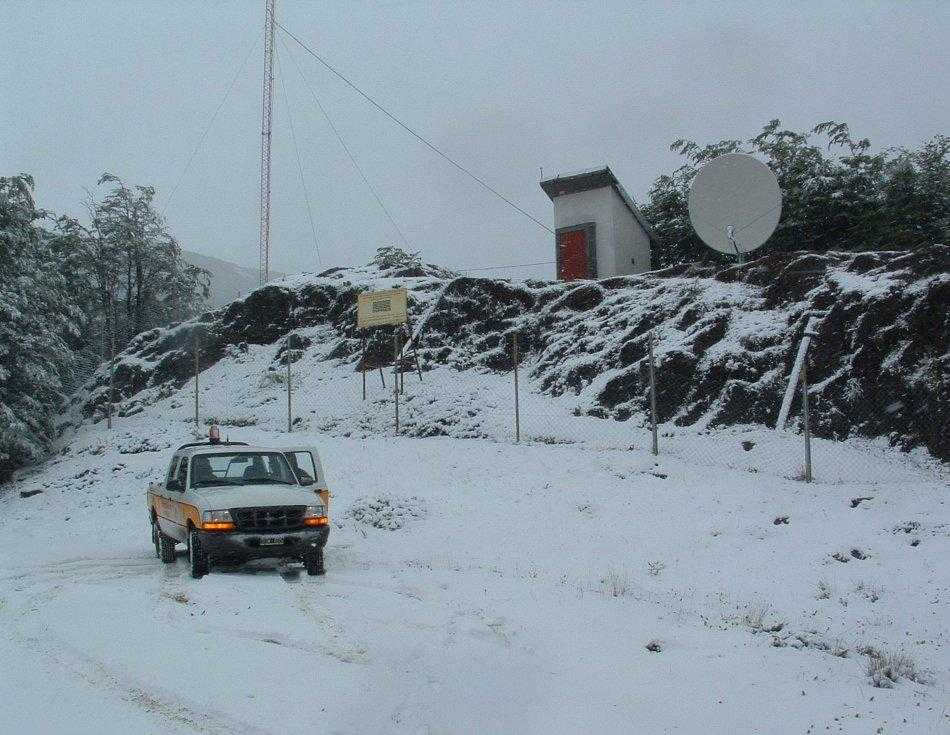
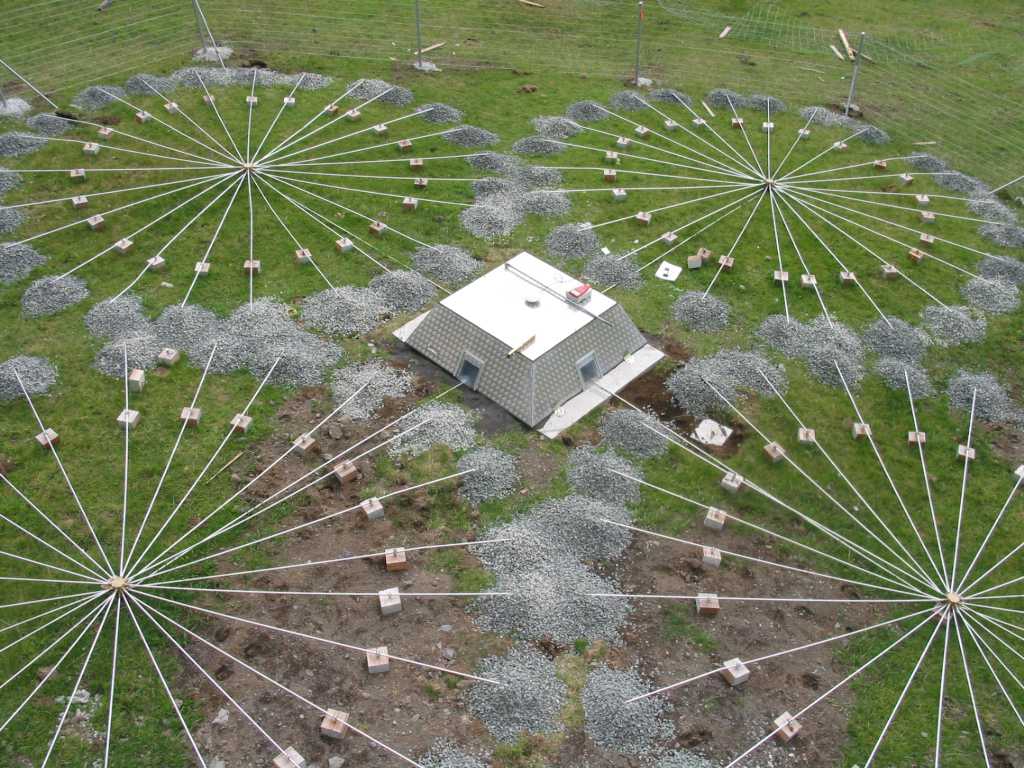
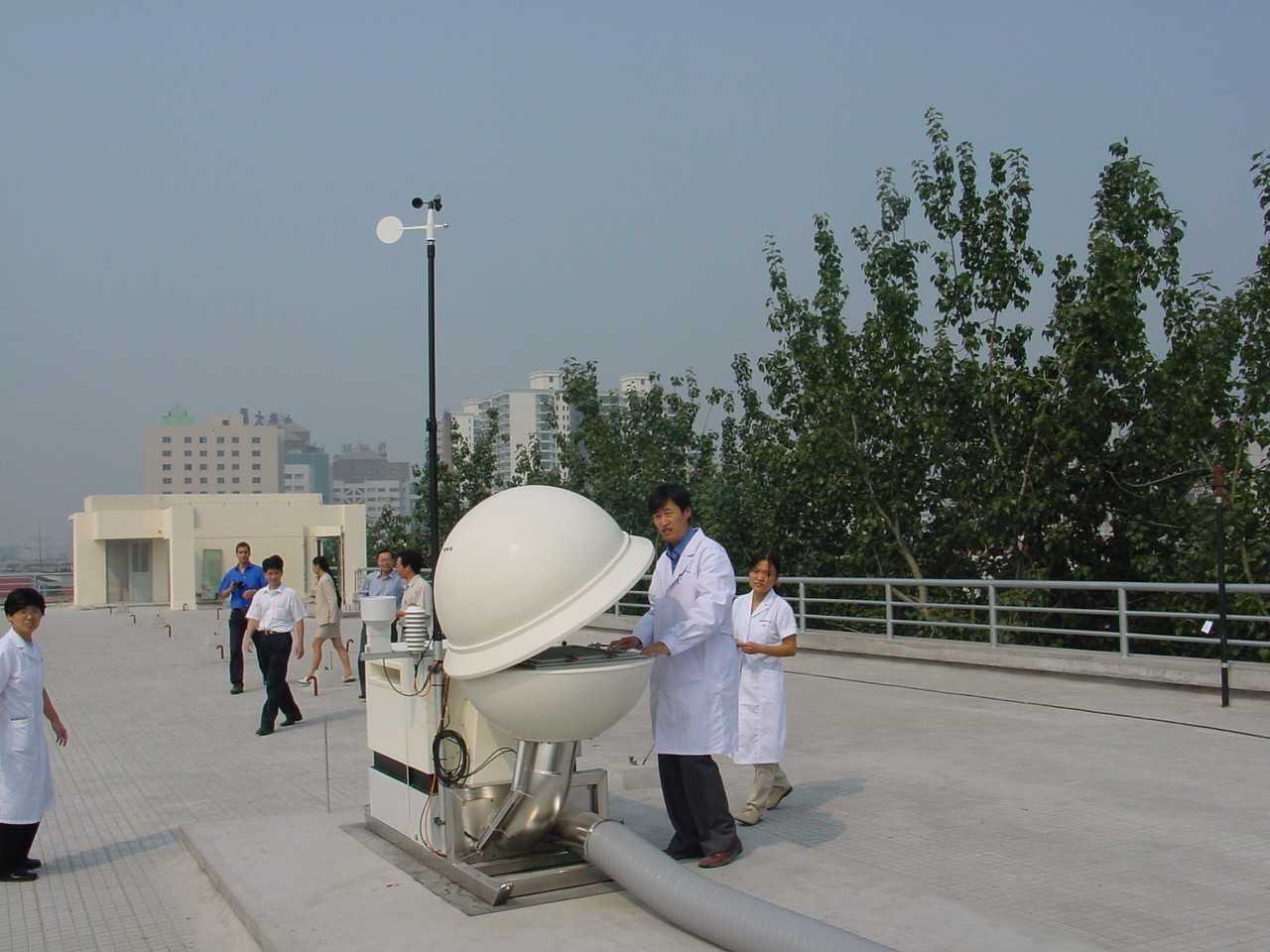
The different International Monitoring Stations are set up in such a way that signals from several of the monitoring techniques must be detected at the same time to indicate a test explosion.
Radionuclide detection is the only technique that can confirm whether an explosion detected and located by the other three techniques is indicative of a nuclear test. The Partial Test Ban Treaty (PTBT), adopted in 1963, was the first treaty to use environmental sampling for verification purposes. The radionuclide stations detect both radioactive particles that are collected on filters, and radioactive noble gases collected from the atmosphere. In total there are 337 IMS facilities around the globe:
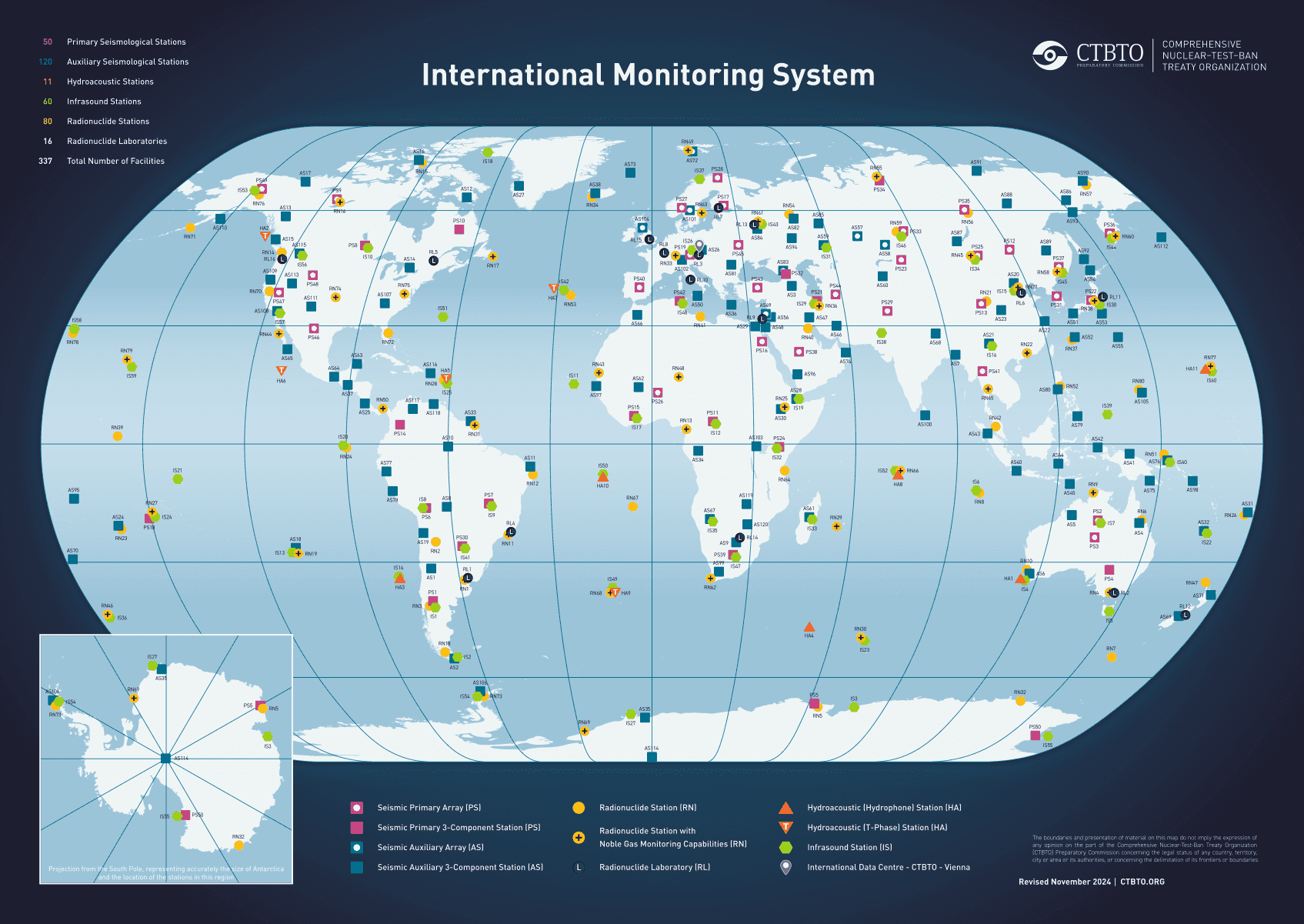
Subcritical tests instead of explosions
A subcritical nuclear weapons test uses quantities of fissile material that are lower than the subcritical mass, so there is no self-sustaining nuclear chain reaction. The fissile material used is generally plutonium-239. Subcritical tests release less than one ton of TNT equivalent and are more difficult to detect, especially if performed underground. Nowadays, there is no regime for the international observation of subcritical tests. Researchers are investigating how to perform monitoring and verification of such tests and are also exploring measures to ensure transparency related to subcritical tests under the CTBT.4
Monitoring of enrichment and reprocessing activities
The detection of clandestine weapons-grade uranium production and plutonium production and separation is one of the main goals in verifying the compliance of non-nuclear weapon states with the Non-Proliferation Treaty (NPT) and the compliance of nuclear weapon states with future fissile material cutoff treaties, such as the Fissile Material Cutoff Treaty (FMCT).
States under the NPT are subject to international nuclear safeguards inspections and monitoring by the IAEA.
The Global Fissile Material Report from 2007 shows the detectability of different steps of the enrichment and plutonium production processes by satellite imaging and environmental sampling.5
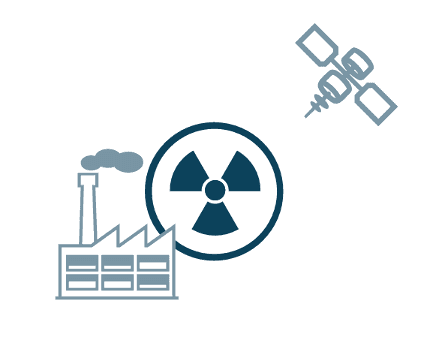
According to the report, the production of weapon-usable fissile materials, such as plutonium and highly enriched uranium (HEU), varies significantly in how easily it can be detected by remote monitoring methods. Some technologies, like nuclear reactors and gaseous diffusion facilities, are generally more visible through satellite imagery and thermal detection. Others, such as reprocessing plants, conversion facilities, and especially centrifuge enrichment, are far more difficult to identify without direct access. Environmental sampling can help in some cases, but its effectiveness is often limited to large-scale operations. These differences highlight the challenges in reliably detecting and monitoring nuclear proliferation activities from a distance.
Plutonium production and separation
To be used in a weapon, plutonium needs to be generated inside a nuclear reactor and then separated from the spent nuclear fuel.
Undeclared nuclear reactors that are readily detected via satellite images, open source information or nuclear safeguards inspection. Changes in the reactor operation to produce plutonium is more challenging to monitor but can be identified if the facility in question is subject to nuclear safeguards.
New undeclared reprocessing facilities, operating on a large scale with the aim of being profitable, can be detected via satellite image, open data assessment, etc. The two most challenging scenarios when it comes to detecting an undeclared reprocessing facility are if a common industrial facility is remodelled to function as a quick and simple reprocessing plant, or if a declared reprocessing facility is used to divert material to produce plutonium. In the first case, the monitoring of material in the undeclared facility could indicate illegal activity. In the second case, on-site monitoring could be used to detect such an attempt.
A reprocessing plant has many characteristic features that could be identified during a managed-access inspection, visually and/or with appropriate instruments, without revealing sensitive information.6 These include:
- heavy walls for gamma radiation shielding, typically 1–2 metres thick and made of metal aggregate containing concrete. Ultrasonic gauges calibrated for wall thickness of up to 1.3 metres are commercially available;
- very high gamma-ray radiation levels inside spaces where spent fuel has been dissolved and fission products separated from the Pu. A simple dosimeter that measures only gamma-ray dose and not its energy spectrum could verify the radiation levels;
- release of volatile radionuclides during the dissolution of spent fuel. The fission product detected furthest downwind from a reprocessing plant is Kr-85. This product is produced in 0.3% of fissions of U-235, has a half-life of 11 years and is not reactive, thus remaining in the atmosphere. Unless it is removed and contained inside the facility, it should be possible to detect Kr-85 outside the site fence of an operating reprocessing facility.
Highly enriched uranium production
Enrichment via gaseous diffusion requires large-scale facilities that usually have a specific shape and use a lot of energy, allowing detection via both visible and thermal satellite imaging. Enrichment via centrifuges cannot be detected via the satellite imaging or environmental sampling techniques considered in the GFM report. Monitoring systems that are placed inside the facility might be required. Nuclear safeguards procedures are applied in enrichment facilities declared under the NPT to ensure that the uranium enrichment level is kept under the allowed limit, which usually means low-enriched uranium (LEU) used as fuel in nuclear power reactors. Gamma-ray spectroscopy and weighting are examples of techniques used by nuclear safeguards to monitor fuel enrichment. In the case of the FMCT, where states agreed to stop the production of HEU, facilities that were used to produce military HEU were converted to produce civil LEU. The challenge in such facilities is to distinguish HEU particles that were produced in the past from present production particles. For this purpose, techniques to identify the isotopic signature and the age of such particles are applied.
Footnotes
-
https://edition.cnn.com/2023/09/22/asia/nuclear-testing-china-russia-us-exclusive-intl-hnk-ml/index.html ↩
-
Park, Sulgiye/Puccioni, Allision/Verille, Francesca. 2024. Thermal satellite imagery for the detection and monitoring of nuclear weapons: Early approaches for automating imagery analysis. Available at: https://hai.stanford.edu/events/thermal-satellite-imagery-detection-and-monitoring-nuclear-weapons-early-approaches ↩
-
Kuhn, E./Fisher, D./Ryjinski, M. 2001. Environmental Sampling for IAEA Safeguards: A Five Year Review. IAEA-SM-367/10/01. Available at: https://www-pub.iaea.org/MTCD/publications/PDF/ss-2001/PDF%20files/Session%2010/Paper%2010-01.pdf ↩
-
Jones, S. L./von Hippel, F. N. (1997): “Transparency measures for subcritical experiments under the CTBT”, in: Science & Global Security 6(3): 291–310; Hruby, J. (2023): Remarks by NNSA Administrator Jill Hruby at the CTBT: Science and Technology Conference 2023, https://www.energy.gov/nnsa/articles/remarks-nnsa-administrator-jill-hruby-ctbt-science-and-technology-conference-2023 ↩
-
GFMR. 2007. International Panel on Fissile Materials, Global Fissile Material Report, 2007. Available at: https://fissilematerials.org/library/gfmr07.pdf ↩
-
International Panel on Fissile Materials, Global Fissile Material Report, 2007. Available at: https://fissilematerials.org/library/gfmr07.pdf ↩